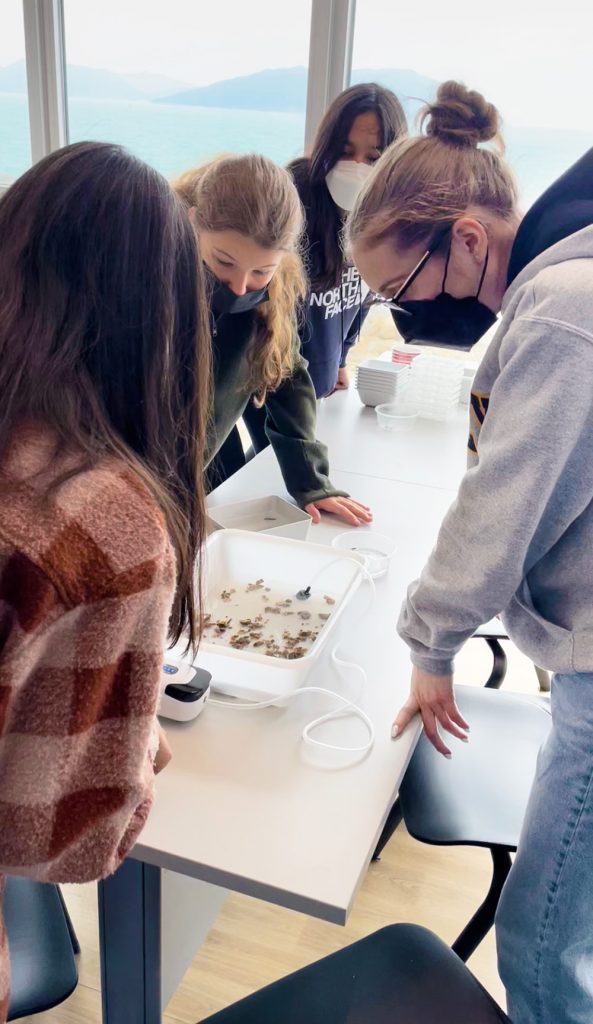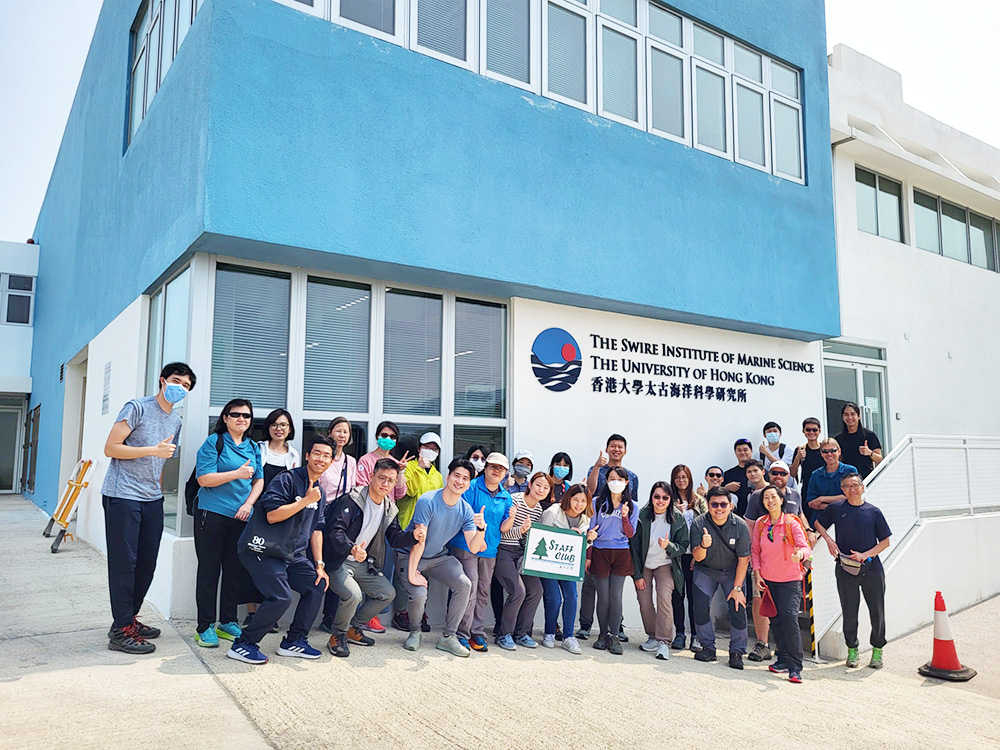May 2023 | Volume 24 No. 1
Voyage of Discovery
Located on a rocky peninsula on the southside of Hong Kong, on the shores of Hong Kong’s only Marine Reserve, the Swire Institute of Marine Science (SWIMS) is one of the premiere coastal research centres in Asia. Recent expansion work has included state-of-the-art labs for molecular work, specimen tanks and aquariums for research, touch tanks for visitors, and a seminar room with a stunning view over the surrounding sea, as well as facilities for the Swire Coastal Outreach Hub (SCOH), including a multipurpose classroom/visitor centre/museum for experiential workshops.
“While we already have a strong connection with the community,” said SWIMS Director, Professor Gray A Williams, “under SCOH we want to bring a more rounded and science-based approach to providing workshops and activities for school and university students, which will include biodiversity surveys, marine debris clean-ups and assessments, rocky shore and inter-tidal monitoring, and coral reef restoration modules.
“Marine conservation is so important now, but we can’t simply expect people to protect the sea if they have no knowledge or interest in it. We want to help local people make a connection with the ocean and inspire them to want to help because they care about what is there.”

High school students visiting the Swire Institute of Marine Science (SWIMS) and learning to identify local marine species with the guidance of SWIMS researchers.
Science communication
A team of three is spearheading the new programme, led by Outreach Manager Dr Phil Thompson. “Before, we have hosted shore tours for schools and research projects but no official programme,” he said. “Now we are expanding the breadth of our science communication with modules that will give visiting students and guests the immersive experience of being a marine scientist for the day.
“The content will be linked closely with school lessons so that teachers can use our courses to fulfil curriculum needs, through experiential modules and planned activities outside of the classroom that are relevant to what they’re learning at school.”
“SWIMS is also collaborating with other like-minded organisations, such as the Hong Kong Maritime Museum’s Swire Marine Discovery Centre,” said Outreach Officer Mr Calvin Foo. “We want to conduct joint outreach programmes, and to connect with groups that do beach clean-ups and coastal arts projects, for example, so that we can bridge the gap with them by bringing the science, as well as showcasing the Marine Reserve, and our coastal and marine biodiversity research.”
Communications Officer Ms Katie Liu is responsible for spreading the word about the new SCOH activities on social media such as Facebook, Twitter, Instagram and the SWIMS website. “SWIMS had a media presence before but we were probably only talking to the scientific community,” she said. “Now with SCOH, we’re focussing on a new generation and presenting a more coherent and comprehensive picture.
“We’re encouraging city kids to join our science community, become citizen scientists and come to SWIMS for hands-on experiences. The point is we are sharing our science to save our seas – and they can be part of that. Perhaps in some it will also spark an interest in becoming a marine scientist.”
Collecting species
“Our SCOH modules will also use similar methodology to our research work,” said Dr Thompson. “To collect samples from sites around Hong Kong, students will use the same Autonomous Reef Monitoring Structures (ARMS) that our MarineGEO research project employs. In one ARMS unit, an area the size of a basketball, they can collect 100-plus species, which we help them separate and classify what they have found.” “This all feeds into our ‘experience the science’ approach to SCOH,” said Mr Foo. “A recent group saw a moray eel – what a great first step on their journey to connecting with our oceans!”
SCOH will be up and running early in the coming academic year, in October, ready to welcome a full schedule of students from local and international schools. Eventually, SCOH will also welcome hikers to the SWIMS’ visitor centre too. “There are so many hikers visiting Cape d’Aguilar now, and many of them don’t know about the Marine Reserve or what SWIMS is,” said Professor Williams. “The research we do here is relevant to the protection of diversity across the globe, but it’s not enough for us just to do the science, we need to help inform the wider public. If we can stimulate just 10 per cent of visitors to be interested in what we do, that could make a big difference to knowledge and awareness of marine protection in Hong Kong and beyond.”

The Swire Coastal Outreach Hub (SCOH) welcomed members of the HKSAR Government’s Agriculture, Fisheries and Conservation Department staff club for a tour of its facilities.
Marine conservation is so important now, but we can’t simply expect people to protect the sea if they have no knowledge or interest in it. We want to help local people make a connection with the ocean and inspire them to want to help because they care about what is there.

PROFESSOR GRAY A WILLIAMS

